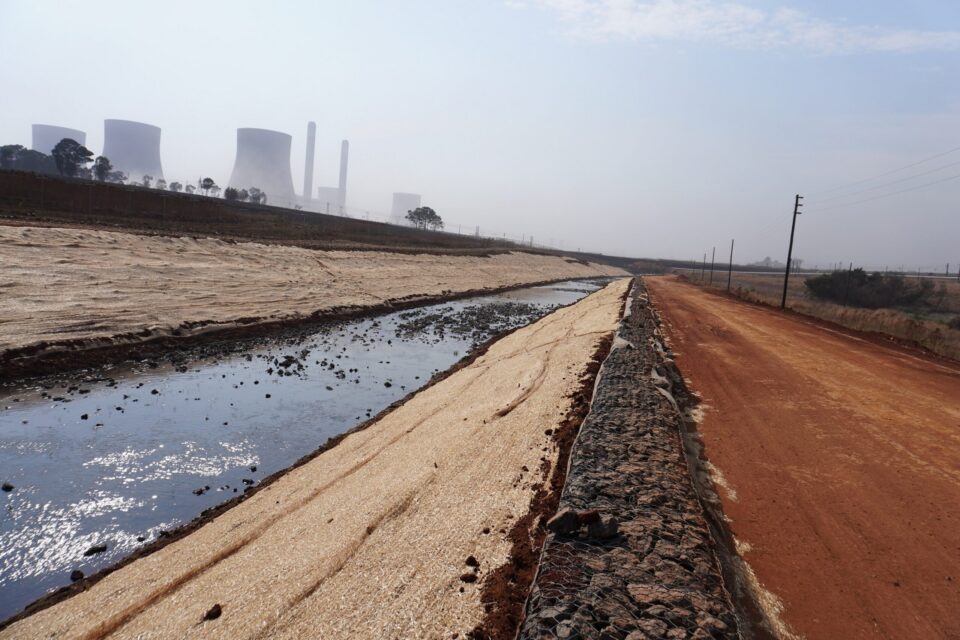Preparing the way for expanding the Ash Disposal Facility (ADF) at Eskom’s Kendal power station, a 3 km stream diversion has been completed by a joint venture of Concor and Lubocon Civils.
The diversion was part of the joint venture’s contract to add 65 hectares to the ADF footprint, giving the power station the necessary ash disposal capacity for the future. According to Concor contracts manager Pierre van Vuuren, the new stream is about 30 m wide and 3 to 5 m deep – channelling clean water around the ADF area.
“It was a massive undertaking, with the installation of over 4,100 gabion baskets and almost 2,000 Reno mattresses lining the waterway,” says van Vuuren. At 300 mm deep, the wider dimensions of the mattresses make them ideal for creating a stable floor for the stream. The more square-shaped gabion baskets were used mainly for the stream slopes, especially where faster water flow was expected to cause erosion.
Being filled with rock, the stacked gabions and mattresses form a monolithic structure, while the rock fill allows water to flow through the structure. At the same time, soil is retained between the rock, providing the necessary relief from hydrostatic pressure.
“Each basket was three cubic metres in volume, and they were all filled by hand,” he says. “This required more than 42,000 t of rock, and took about 120 workers over 19 months to complete.”
The rock was sourced from local quarries and crushers. A key concern of the design was to ensure the necessary robustness of the structure, so that it can withstand a 1-in-100-year flood. Sustainability is also an important aspect of the design, making sure that the new stream will be conducive to the natural vegetation of the wetland that it replaces.
“The base of the stream comprises wetland material, which we took from the wetland itself, while the sides are layered with topsoil,” he explains. “This is allowing the rapid revegetation of the stream with reeds and other aquatic life.”
The addition of biodegradable hydro mulch blankets on the sides helps to prevent erosion for the first six months after completion, and a seeds spray fosters the growth of grass as a ground covering. Almost 70,000 square metres of geotextile was applied to the subsoils and stream diversion.
To accommodate the topography of the landscape and predicted flow rates of the stream, the diversion is comprised of four different ‘sections’, each with their own design characteristics. The Type A section is lined with gabion baskets and a biodegradable blanket, prioritising the stability of topsoil to prevent erosion while facilitating the rapid growth of plants. Type B is the flatter portion of the stream, while Type C comprises 17 steps where the stream descends more steeply and water flow accelerates. Type D, similar to Type A, has wetland material at the bottom and topsoil on the sides.
The diversion of the stream has been a central aspect of the ADF expansion at Kendal, requiring the work to be carefully scheduled in accordance with environmental regulations. These rules specified that certain activities on the new ADF area could only proceed once the stream diversion was complete.
“Every aspect of this project is conducted with priority being given to the environmental aspects,” concludes van Vuuren.




